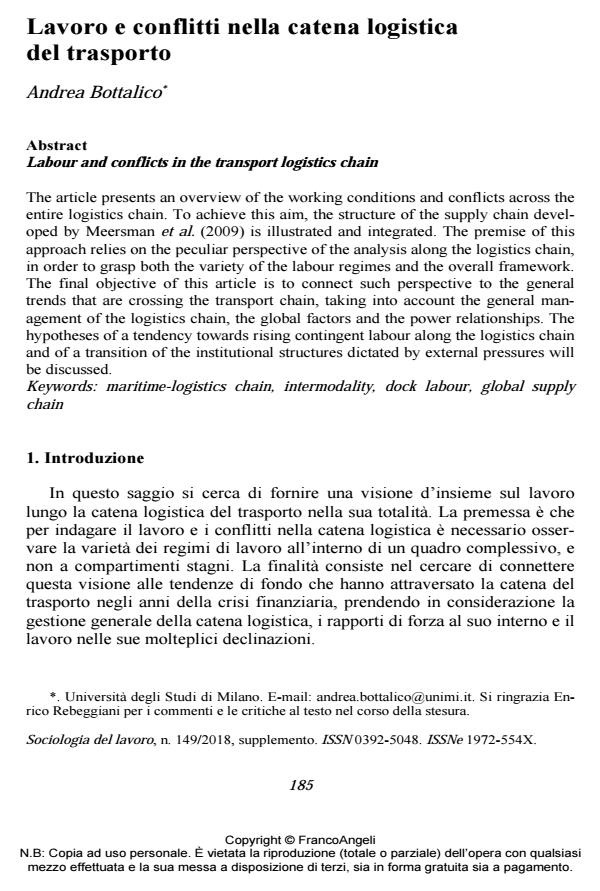Labour and conflicts in the transport logistics chain
Journal title SOCIOLOGIA DEL LAVORO
Author/s Andrea Bottalico
Publishing Year 2018 Issue 2018/149 suppl.
Language Italian Pages 16 P. 185-200 File size 190 KB
DOI 10.3280/SL2018-149S13
DOI is like a bar code for intellectual property: to have more infomation
click here
Below, you can see the article first page
If you want to buy this article in PDF format, you can do it, following the instructions to buy download credits

FrancoAngeli is member of Publishers International Linking Association, Inc (PILA), a not-for-profit association which run the CrossRef service enabling links to and from online scholarly content.
The article presents an overview of the working conditions and conflicts across the entire logistics chain. To achieve this aim, the structure of the supply chain developed by Meersman et al. (2009) is illustrated and integrated. The premise of this approach relies on the peculiar perspective of the analysis along the logistics chain, in order to grasp both the variety of the labour regimes and the overall framework. The final objective of this article is to connect such perspective to the general trends that are crossing the transport chain, taking into account the general management of the logistics chain, the global factors and the power relationships. The hypotheses of a tendency towards rising contingent labour along the logistics chain and of a transition of the institutional structures dictated by external pressures will be discussed.
Keywords: Maritime-logistics chain, intermodality, dock labour, global supply chain
- A cento passi dal magazzino. Il sodalizio anti-sindacale tra impresa e criminalità organizzata. Un caso di studio estremo nel settore logistico Tea Maistro, Anna Mori, Marco Guerci, in STUDI ORGANIZZATIVI 1/2025 pp.67
DOI: 10.3280/SO2025-001003 - Le dimensioni del sistema marittimo italiano Giulio Mellinato, in ITALIA CONTEMPORANEA 305/2024 pp.155
DOI: 10.3280/IC2024-305007 - Criminalisation of Dissent in Times of Crisis Stefano Portelli, Salvatore Porcaro, pp.381 (ISBN:978-3-031-75375-6)
Andrea Bottalico, Lavoro e conflitti nella catena logistica del trasporto in "SOCIOLOGIA DEL LAVORO " 149 suppl./2018, pp 185-200, DOI: 10.3280/SL2018-149S13